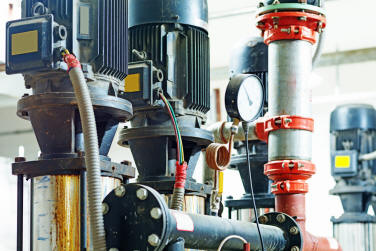Valves: Valve Maintenance
- Home >
- articles >
- mechanical >
- valve maintenance
Extending the Life of Your Valves
By Amanda Hill
There are two ways to approach valve maintenance: Fix the valve after it breaks, or do preventive maintenance to keep your valves working smoothly. Poorly maintained valves don't last as long as they should because they're prone to sudden failures. Those failures result in work slowdowns, downtime, increased replacement costs and more money diverted to maintenance overhead. Learn how to extend the life of the valves throughout your facility, and you can expect to see some sizeable savings.

Get to Know Your Valves
In an industrial facility, you're likely to encounter a variety of different valves, including:
- Ball valves
- Gate valves
- Butterfly valves
- Check valves
- Pressure reducing valves
Learning how each valve type works will help you design a valve maintenance program for your facility. Be aware of the specifications of each type of valve. You should have a clear picture of the types of systems your valves were made for, and you'll need to know the physical properties of your valves. For instance, pvc fittings can be used with metal fittings, but copper and brass cannot be mixed with steel fittings.
Technical specifications are important, too. Do you know the pressure and temperature tolerances of the valves in your system? valves that are pushed to their limits will fail more quickly than valves that are rated for higher pressures and temperatures than they are normally exposed to. That's not to say that you should replace each valve in your facility with products that have higher tolerances, but being aware of which valves are under the most stress will help you target the weak points in your system.
keeping valves clean and working smoothly
Another important way to extend the life of your valves is to simply keep them clean. While the amount of cleaning required varies from facility to facility, even the cleanest plants should make an effort to clean valves at least once a year. Dusty facilities or those that handle corrosive agents should clean valves every six months or more often depending on the severity of the problem. Use a cloth, wire brush or lubricant to clean the valve casing. Keeping your valves clean will prevent a buildup on the valve stem and other moving parts, which will help your valves last for a long time.
routine valve inspections
Regular inspections are central to any preventive maintenance program. Valves under high pressure or extreme temperatures should be checked on a weekly or monthly basis, while valves that aren't under much strain can be checked every six months or yearly. Look for cracks in the valve casing and other faults, and check gland nuts and other hardware to make sure everything is tight. If possible, turn the valves to make sure they aren't seizing from a buildup of minerals or rust.
Leak detection should be another part of your inspection routine. For valves that handle water, acid and other liquids, leaks are usually relatively easy to spot. Even if there isn't visible wetness, a valve that has leaked for a week or two normally shows signs of mineral buildup or corrosion on the casing.
Valves that handle compressed air, refrigerants and other gases can be checked with a simple soap and water mixture. Spray this mixture on the valve and watch for bubbles to form. another alternative is to use an electronic leak detector. These devices are more effective than the soap-and-water method for two reasons: They reduce the risk of error and they can spot small leaks.
advanced industrial valve repair and maintenance procedures
During yearly plant shutdowns, it's a good idea to take valves apart, clean the inner mechanisms and replace anything that is worn. Over time, mineralization, rust and corrosion will affect the valve stem, springs, coils, nuts and other metal parts. In addition, there are many plastic or rubber parts that may need repair or replacement, including:
- Glands
- Bushings
- Gaskets
- Packing
- O-rings
After years of hard use, internal plastic and rubber will wear, rot or become rigid and brittle. It's always wiser to replace these parts at the first sign of trouble rather than after they fail completely.
You'll also want to ensure that the valve disk is making even contact with the seat of the valve. Use a spotting-in procedure to make sure your valves are closing properly. If you notice any irregularities in the disk or seat, you can lap-in or re-seat the valve as necessary. if you want to make sure the valves in your facility have a long lifespan, knowledge and routine inspections are essential. Follow that up with a regular cleaning and maintenance program, and you can reduce maintenance costs by lengthening the life of your valves.
Author Bio: Amanda Hill is a part of the content team at PVC Fittings Online, a valve supplier for industrial, commercial and consumer customers all across the United States.
Related training products:
Online Mechanical Training Videos
Industrial Hydraulics Training
